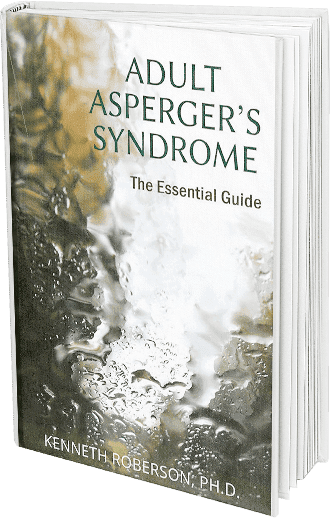
Often people ask me, as an Autism Spectrum Disorder (ASD) psychologist, how I diagnosis ASD in adults. Usually the person asking wants to know whether they might have ASD, and typically he or she is also curious about what the procedure involves, how a diagnosis is different from an evaluation, the degree of certainty in a formal diagnosis of ASD, and various related questions.
Here is my answer to these, and other, questions about the process of determining if an adult has Autism Spectrum Disorder.
The First Step in Diagnosing Autism Spectrum Disorder
For someone who wishes to know if they have Autism Spectrum Disorder, I first ask that the person fill out several questionnaires, and either email them to me or bring them to my office for our initial meeting. The questionnaires are accessible on my website and are designed to identify abilities and behaviors that could be indicative of ASD. These serve as screening measures, estimating whether there is enough indication of possible Autism Spectrum Disorder to proceed with a more thorough assessment.
In some instances, because the responses show little suggestion that Autism Spectrum Disorder is a likely diagnosis, I will discuss with the person whether it makes sense to proceed with a more thorough evaluation.
I should point out that these questionnaires are designed to be over-inclusive so that anyone with Autism Spectrum Disorder is likely to be identified, but they do not prove the presence of ASD, nor are they a substitute for a thorough diagnostic adult autism assessment.
Review of Records
Once there is enough evidence to proceed, I typically ask people to provide me with written documentation of their medical history, academic achievement, and social/emotional behavior from early childhood until the present. Invaluable information is often contained in previous reports and assessments that identify characteristics of Autism Spectrum Disorder. This information can be examined and confirmed during the diagnostic process.
I am not strict about reviewing records as sometimes the person does not have relevant documents or, if they are accessible, does not want to share them. That is perfectly fine, as the diagnostic process and/or accuracy of a diagnosis does not depend upon a record review.
Interviews
The next step in the process is a face-to-face meeting. My standard request is to meet with the person at least three times. Each meeting lasts 50 minutes, during which I ask a series of questions, write down the answers and observe the person’s responses.
Obtaining a thorough developmental history is a major goal, and usually the first order of business for the interview. By history, I mean gathering information about the person’s early childhood experiences, relationship dynamics in one’s family of origin, friendships, medical issues, language acquisition, academic history and any other information that sheds light on how the person grew and matured from the first years of life to adulthood.
I tend to pay close attention to how the person got along with others, within and outside the family, particularly whether family and peer relationships were generally of the kind that one would expect from the average child.
I am interested to know whether the person developed skills and behaviors growing up that allowed him or her to gain eventual independence and to function safely and appropriately in daily life. Simple examples of this are learning to dress oneself, taking care of one’s hygiene, being able to follow directions and organize information, managing impulses and needs when needed, and socializing appropriately with peers.
I am also interested in whether the person showed any early signs of restricted, repetitive and stereotyped patterns of behavior or interests and activities in childhood. Often, children with Autism Spectrum Disorder will accumulate and catalog certain objects, like stones or bottle caps, train schedules or chess pieces, in a way that is abnormally intense and focused. Or they will gather facts and information about a specific topic, like sporting statistics, that is unusually intense, single-minded and often done in solitary. This is one of the hallmarks of Autism Spectrum Disorder.
You may wonder about this focus on childhood behaviors and interests. Simply put, Autism Spectrum Disorder develops in the first few years of life. Typically, symptoms may be seen by age two, sometimes earlier, and never is it the case that Autism Spectrum Disorder develops later in life, including in adolescence and adulthood, without having first occurred in early childhood.
While I pay careful attention to how the person was during their childhood, I also take into consideration their current behavior, activities and interests and how these might reveal the characteristics of Autism Spectrum Disorder. This information is highly relevant to determining an accurate diagnosis.
Conclusion
With the data I gather through questionnaires, records, history taking and clinical interview, I am able to determine with a significant degree of accuracy whether a person has ASD. I provide a summary and review of my findings, and I also comment on any signs of secondary disorders such as depression, anxiety, or ADHD. Finally, I discuss treatment options, if the person is interested, and I recommend programs and services that can assist with managing and alleviating the difficulties of Autism Spectrum Disorder.




